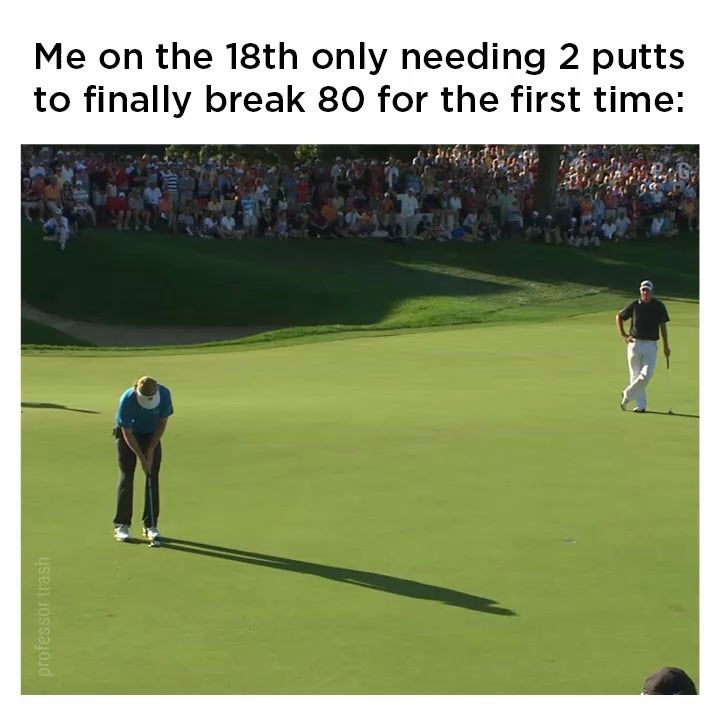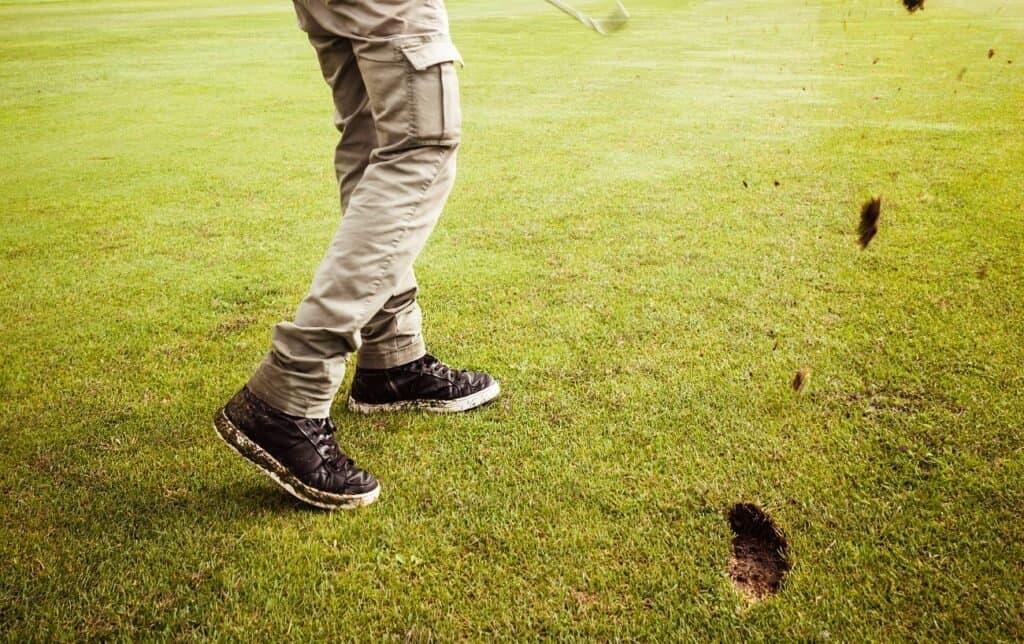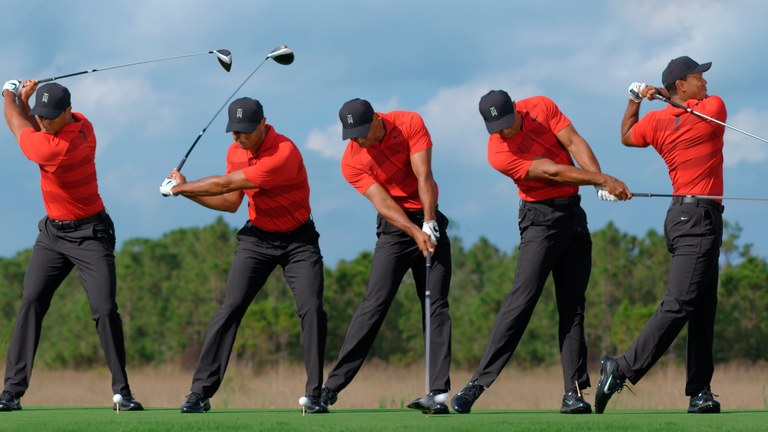
This article will show you how to avoid the "takeaway” golf swing. You'll learn how to control your arm and hands, correct your shoulder turns and keep a triangle when you take-out. You'll soon be able to avoid taking out take-outs and improve your golf game. These steps can help improve your golf game. These tips will help you improve your golf swing if you are one of the millions who have a bad swing.
How to avoid swinging the takeaway
Setting up your position before swinging your entire golf swing is a great way to avoid the takeaway. Many golfers do not feel the need for manipulating the clubface during the takeaway. The swing happens naturally once your back is behind the ball. You can avoid this problem by setting up your position before you execute your swing. Instead, you can try out different drills to determine which one best suits your swing style.

During take-out, check the position of your arms and hands
Proper takeaway plays a major role in a good golf swing. If the clubhead doesn't travel over the hands, it will go either outside or inside, leading to a pull/fade or push. A mirror or video can be used to check the position and alignment of your arm and hand. To verify that your arm and hand are properly positioned, you can use a takeaway to examine your swing.
Maintaining a triangle during the takeaway
During the takeaway, the clubhead should always point to your belt buckle. This is a mistake. To avoid this, you should keep the head of the clubhead in your hands until it is time to backswing. To accomplish this, you should maintain a triangle by keeping the head of the club outside of your hands until you backswing. In other words, maintain a triangle at all times.
Correcting the shoulder position during the takeaway
Many amateur golfers are too focused on opening their hips to lengthen their backswings. A positive chain reaction can be set off by a full turn of the shoulders throughout the rest the golf swing. Proper shoulder turning will help to keep the chest connected to your spine and produce more width in your backswing. If your shoulders are properly turned, your hips will naturally open wider in the takeaway.

Ensure you follow a straight line while takingaway
Golfers who use their wrists for control of the club during the takeaway are making some common mistakes. The dominant muscles of the shoulders should control the turn. If the wrists are used to control the club, it can throw off balance. It is possible for the ball to slip inside your wrists, or you could draw or hook. Avoid this mistake by making sure that both your wrists AND shoulders are active during takeaway and turn.
FAQ
How do you learn to play golf properly?
It takes practice and patience to learn how to play golf. It is possible to improve your game with practice. Here are some tips to help you:
-
It is essential to practice regularly. Golf requires constant attention and concentration. If you don't practice enough, you will not improve your skills.
-
Play with people who know how to play. Playing with other people will help you develop your style of play.
-
Before you practice, learn about golf. This will give an overview of your needs.
-
Don't try and master everything at once. Start by focusing on one aspect of your game. One example is to work on your putting and chipping skills. When you feel confident, you can move on to other areas of your game.
-
Take lessons. Lessons can teach you important things like stance, swing speed, posture, etc.
-
Try new techniques. Experiment with different grips, stances, swings, and so on.
-
Keep records. Keep track of your progress by recording your scores. You can then see your strengths and weaknesses.
-
Join a local golf club. Many clubs offer lessons at no cost. These clubs often have friendly members who will be happy to teach newcomers.
-
Get a coach. You can get guidance from a professional coach on certain areas of your game.
Are there any skills required to play golf?
No. All you need to do is bring a pair of walking boots, a towel and a few clubs.
What are the various types of golf courses available?
There are many kinds of golf courses. Some courses are made for beginners, others for more experienced players.
Some courses are near rivers, lakes, mountains, or forests. Others are in urban areas. Golf courses range from public parks to private estates.
What should I bring for a golf trip?
Take some snacks and drinks with you. You should also bring along your favorite tee shirt and sunglasses.
Can you teach me how to play the game of golf?
Yes. You can take lessons at several schools to learn how golf is played. You will need to buy new equipment such as a set of clubs.
Statistics
- Professional golfers typically make between 60% and 70% of greens in regulation. (en.wikipedia.org)
- Buying a set of Titleist or Taylor-Made irons for nearly $1,000 is simply not necessary and likely a waste of money. (golficity.com)
- In the United States, women made up 25 percent of golfers in 2021, which was up from 19 percent in 2011, and junior female golfers account for 35 percent or 1.1 million golfers.[50] (en.wikipedia.org)
- Professional golfers typically make between 60% and 70% of greens in regulation. (en.wikipedia.org)
External Links
How To
How can you play more golf when the wind is blowing?
Golf is played in open areas on grassy areas. It is a very popular sport. There are many different types of golf courses all over the world. Indoors, golf is also possible at malls and indoor arenas. Each hole has a number of holes where players have to hit the balls. Each hole has a fairway rough, fairway, fairway, green, hazards (e.g..water), and rough. Depending on the type of shot, players can use a driver or wedge, long iron, putter or long iron. According to the course rules, players may need to carry the ball for a specified distance before hitting it. Or they may only need to drop the ball into the cup. Outdoor golf is different from indoor golf. These conditions include the speed of wind, temperature, humidity, as well as visibility.
There are two types main winds: headwinds or crosswinds. Crosswinds blow in the opposite direction to headwinds. If the wind is blowing towards a golfer, it will blow against him/her. If the wind is blowing away, he/she'll be hitting with wind. Playing golf in a strong wind is much harder because the ball tends to fly higher and further. It becomes difficult for the player control the trajectory and the direction of the ball. To compensate for these effects, players try to keep the club face perpendicular to the ground. They aim to strike the ball so that it makes contact with everything and gets maximum power. The ball will fly farther in stronger winds, but it will fly lower in stronger winds.
Playing golf in the wind requires a lot of practice. The wind has an effect on the ball's flight path, as mentioned earlier. A great golfer should be aware of what type of wind is blowing in the area. He/She would adjust the swing to compensate so that the ball can be hit cleanly and with minimal energy. Another important factor to consider is the location of the wind. The wind doesn't always travel the same way in all directions. For instance, while the wind blowing off the ocean is generally very light, it can be stronger close to the shoreline. Similarly, the wind blows strongest close to the ground. The golfer must therefore pay attention to the wind direction as well as intensity.
You must adjust your swing constantly to play golf in wind. It is important to be aware of the wind and adjust your swing accordingly. You must also learn to read wind patterns and adjust your swing accordingly.